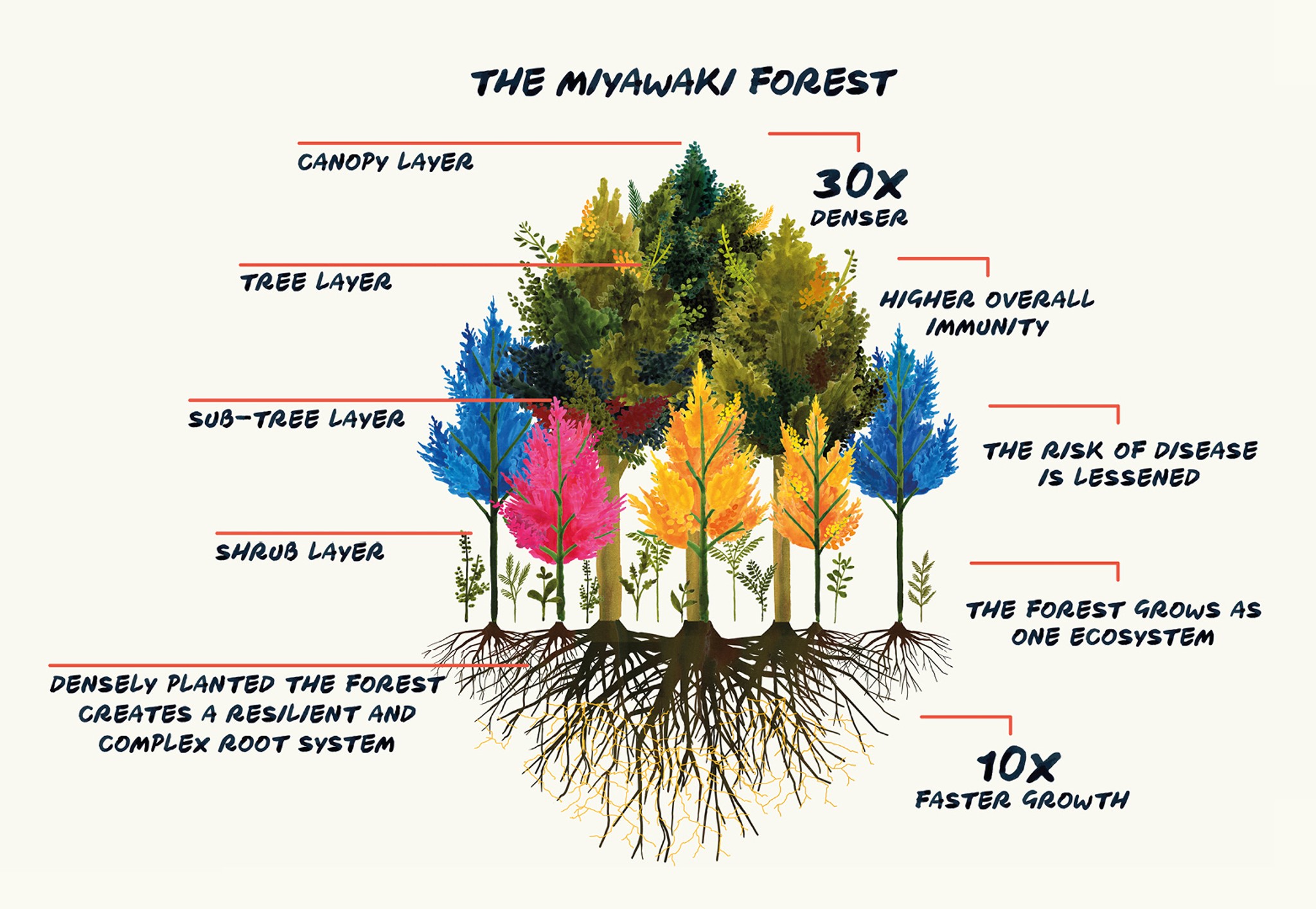Why We Use the Miyawaki Method

Initial density of sapling planting is a key method of the Miyawaki method. This is a mirroring of a forest ecosystem’s own growth pattern - nature knowing best and not hung up about being copied!
This type of planting creates collaboration and competition, polar opposites but with the same end goal - healthy, dense diversity of growth.
Competition for light and subsequent photosynthesis stimulates young saplings to push higher and race upwards. Planting different canopy heights randomly together allows for this race to the sun to be balanced with dense canopy formation.
Collaboration is initially a hive of activity underground. The young saplings establishing symbiotic friendships with their mycorrhizal fungi that benefit all involved - trees, fungi, microbes and general soil health.

The close spacing of the native saplings of a Miyawaki forest means the root systems will quickly knit together with the help of the mychorrizal fungi. This takes growth to a new level as the saplings interact and grow as one ecosystem rather than individuals. Water can be drawn up and evenly distributed while nutrients are often shared back and forth. Risk of disease is lessened as balance is created in the soil and above ground. The diversity of species offering higher overall immunity and fungal levels in particular kept in balance.
Above ground leaf litter benefits all and is cycled backed into the soil, while in the hotter months transpiration from the young trees has a cooling effect for the forming forest.
Birds tend to settle where they feel safe - forests always being alive with the sound of bird song, and are one of nature’s perfect ways for keeping pests under control and in balance.




